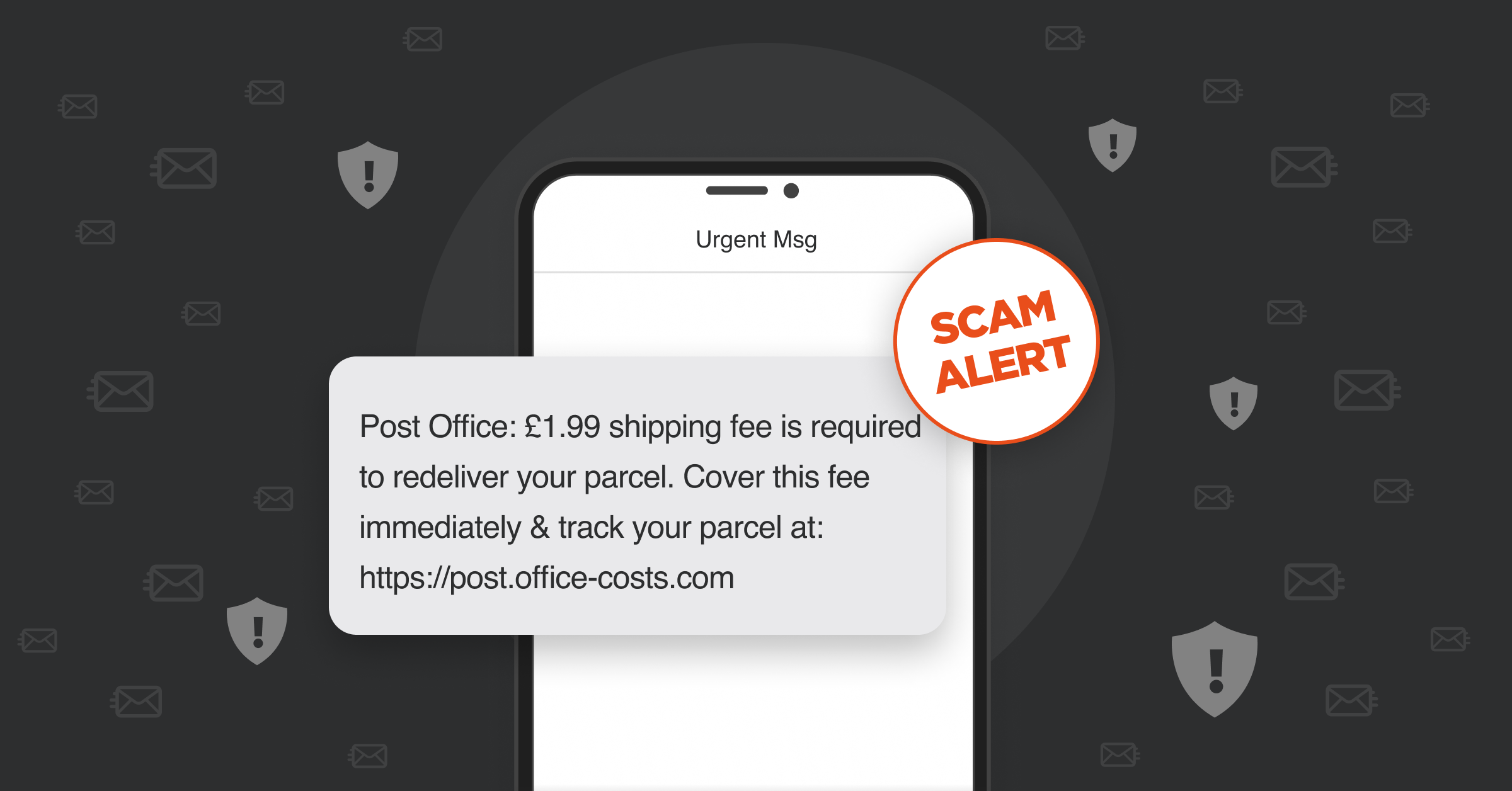Retailer magic: SMS strategies for Winter | On Demand Sign up for our webinar

Scam Watch: The Delivery Scam
Smishing attempts are on the rise in the UK. According to Which?, (Link: https://press.which.co.uk/whichpressreleases/smishing-attacks-in-the-uk-grew-by-nearly-700-in-the-first-six-months-of-2021-which-reveals/) the number of attempted smishing attacks rose by 700% in the first six months of 2021. If you are unsure what smishing is or would like to know more about what the mobile industry is doing to combat the problem, this article can help.
In this article we’re going to look at one of the most common scams doing the rounds at present: the courier scam. The courier scam has been around for several years, and it typically sees the scammer ask for a small charge to redirect a parcel, or to pay a shortfall in postage. The text messages claim to be sent from a delivery company, for example, Royal Mail, DHL, Hermes and others, but the aim of the scam and how it works is exactly the same in all cases.
An example can be found below:

The text looks fairly innocent and the amount involved is fairly low, so why should you be worried about receiving a message like this?
Scams involving relatively small amounts of money are typically used to test how savvy the recipient of the message is. Clicking on the link shown is likely to lead to longer, more elaborate scams, which could see fraudsters attempt to liberate you of significant amounts of money.
So, what makes this message a scam and how can you spot the tell-tale signs?
- Asking for a payment request
Requesting a small payment charge for re-delivering a parcel may seem like a fairly innocent request, but in many cases it can be the tip of an iceberg. The small amount is likely to lead to more elaborate attempts to steal your hard-earned cash. If you are in any doubt whether a payment request is genuine, check the sender’s website and find out whether requesting payment via text is a standard practice. In most cases, it isn’t.
2. Website address
The website address may look like it’s from a courier company, but on closer inspection it is clear in this case that the website link does not point to a legitimate business.
3. Check the spelling and grammar
Does the spelling and grammar stack up? If there are obvious typos, or the message doesn’t make sense, then this is a clear indication of fraudulent activity.
4. Urgency
Many scammers encourage recipients to act quickly without thinking too much about the action they are asking them to take. If there is a demand for immediate action, it’s highly likely that the message is a fake.
5. Sender ID
This can be a little tough to spot, but if the sender ID is shown in the body of the message and associated with a random mobile number, this should send alarm bells ringing. In some cases, spoof messages can appear alongside legitimate ones you have received, however, if it doesn’t then this is a clear sign that the message has been delivered by a scammer.
How to protect yourself from the delivery scam:
Perhaps the most obvious question you should ask yourself in the first instance is: are you expecting a parcel? If not, then disregard it immediately.
All major courier companies publish advice and guidelines to help their customers spot suspicious or unusual behaviour. Here are a few examples:
https://www.myhermes.co.uk/help-and-support/cyber-security
https://www.dhl.com/gb-en/home/footer/fraud-awareness.html
https://www.royalmail.com/help/scam-examples
https://www.ups.com/gb/en/help-center/legal-terms-conditions/fight-fraud/recognize.page
Finally, if you are in any doubt, report the message to the courier company in question and Action Fraud – never engage with the message directly, never click any links inside it, and once you have reported the message, delete it immediately.
